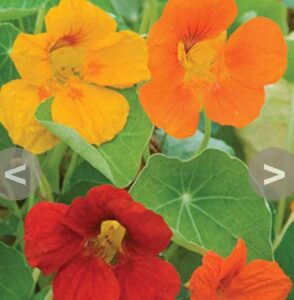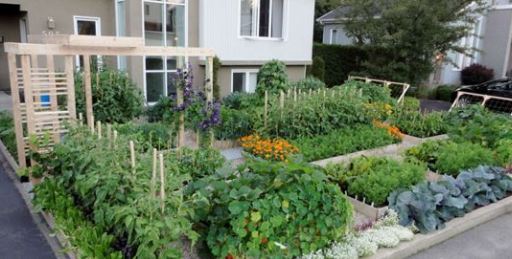By Jeff McCaddon
Copyright Jeff McCaddon, February 27th, 2021. All Rights Reserved.
A uniformly mowed front lawn of green grass is the hallmark of every civilized suburban home in the United States of America. A uniform row of identical homes adorned with freshly manicured grass lawns has been been the standard since the 1950’s. Pete Seeger’s ode to suburbia “Little Boxes,” still pervades suburban culture “Little boxes on the hillside, little boxes made of ticky-tacky, little boxes, little boxes, and they all look all the same.”
As good suburbanites, and members of our television programmed culture, the most important priority is for us to conform.
Walter Lippmann, who coined the terms “Stereotype” and “Cold War” was one of the first to write about this phenomenon in his 1922 book “Public Opinion.” Edward Bernays, nephew of Sigmund Freud, and the father of “Public Relations,” expanded on these theories in his 1923 book “Crystallizing Public Opinion” and his later 1928 classic “Propaganda.” Edward S. Herman and Noam Chomsky’s addition to the literature came with the 1988 book “Manufacturing Consent.”
If we consider times before the programming of society, it gives us clues to traditional uses for the “Front Yard.” In most traditional cultures, lawns of grass are supplanted by ornamental, edible and medicinal plants. Urban and Suburban growing space, being at a premium, would never be wasted on grass, unless they owned livestock to graze. The term Potager in Europe refers to a mix of these three categories of vegetation, arranged aesthetically to provide beauty, utility and gastronomical delight.
Many years ago, I began my journey into the creation of a Crescent City potager without the necessity of tilling the soil and destroying the existing soil biology. Maintaining the soil biology balance of bacteria, fungus, and the many gastropods, worms and insects that feed upon this foundation of life is important because it can take many years to replace.
The “No Till” method to replace an existing lawn of grass consists of a light depriving layer of cardboard or similar compostable material covered by a couple inches of soil, and then a thick layer of mulch. Dark sheet plastic can be used as base layer, but would need to be removed later. The grass below dies from a lack of sunlight and becomes a “Green Manure.” The only exception, in my own experience, is the root systems of crabgrass. Instead of using herbicidal poisons, I chose to invest labor to dig individual root systems out.
If the location of your potager is sunny, you will have a large variety of sun-loving plants to choose from. However, during summer, these plants will need supplemental moisture to grow. Maintaining a generous layer of mulch will help discourage moisture loss. However, no amount of mulch can compensate for the daily watering required by thirsty succulents like tomatoes, cucumbers, squash, melons, and peppers.
Small trees and bushes may appear at first to be a detriment to the Front Yard Garden, as trees and shrubs cast shade that stunt growth below them. Personally, I find my own large tree to be an asset during the summer. Trees and shrubs collect moisture on their leaves and rain moisture down on the garden below during the dry months. Trees provide shade and a significant drop in afternoon temperature, discouraging the drying of plants and soil below. I have seen days when the grass lawns of surrounding homes are brown and dry as a bone; when the entire circle below my tree are green and moist without the need for watering.
For potagers without shade trees, this collection of free water from fog can be accomplished artificially with a “Fog Harp.” The first of these contraptions were made from an array of metal or plastic strings, arranged like those of a musical harp, strung vertically above a collection troth. Moisture from moist air and fog condenses on the strings and slips downward into the troth below. To collect the most moisture, modern Fog Harps use materials similar to filters found in dehumidifiers and air conditioners. Do it yourself plans to construct your own Fog Harp can be found online.
If, like myself, you have the benefit of shade, then it is important to plant shade tolerant plants. There are many such plants to choose from, and most serve the function of being ornamental, as well as providing medicinal compounds, and food.
Many herbs fall into the category of shade tolerance, and provide both medicinal value and culinary delight. A variety of wild vegetation also fall into this category. One of the mainstays of my garden is the Three-Corner Leek. Though considered an invasive species, this wild onion is entirely edible and delicious. The beautiful white drooping flowers of the Three-Corner Leek appear like “Blue Bells” of its poisonous cousin. Three-Corner Leeks are high in sulphur and act as a tonic for both digestive and circulatory systems, dropping cholesterol considerably.
Perhaps the most important plant in my shade potager are Nasturtiums. This South American native was exported to all parts of the globe in the 1600’s, and are extremely comfortable in the cool moist climate of the North Coast. Although considered mostly for its ornamental flowers, the Nasturtium also fits the categories of food and medicine.

Many naturopathic healers consider the Nasturtium to be a “Super-Food” because of its immunity boosting properties. Every part of the Nasturtium plant is edible; seeds, flowers, stems and leaves, and can be used as a garnish or tea. Fresh seeds should be collected while green, and have a spicy mustard taste. Those with digestive systems intolerant to spicy foods might wish to avoid Nasturtium seeds as well as mature leaves because they are coated in an oil similar to mustard plants. This oil is anti-fungal, anti-bacterial, anti-inflammatory, and has expectorant and hypotensive qualities. Women who are breast feeding or pregnant should avoid Nasturtiums. Dried Nasturtium seeds can be ground into a replacement for black pepper. Fresh young leaves and mature flowers of Nasturtiums are great for salads and have a slightly sweet spicy peppery taste. Nasturtiums are extremely high in antioxidants, polyphenols, anthocyanins, vitamin C, calcium, phosphorus, magnesium, potassium, zinc, iron and copper. In their native Peru, Bolivia and Colombia, Nasturtiums are known for their antibacterial qualities, being used to ward-off colds and flu, treat kidney and urinary infections, and dress wounds and cuts as a poultice. One caution about Nasturtiums is the propensity of gastropod, aphid and caterpillar predation. Best to plant other vegetables well away from Nasturtiums.
There are many other ornamental plants with healing properties. Chicory’s blueish-purple flowers contain lactucin and lactuprikin which prevent liver damage, and infusions of tea can stimulate urination and bile production. The bluish-purple flowers of the Fuchsia contain diuretic tannins that induce urination, flush excess sodium from the body, and lower blood-pressure. The yellow-orange flowers of Jewelweed can be used for skin infections, irritation and pain, and are often used for poison oak and poison ivy. Lavender’s blooms are used in aromatherapy to reduce anxiety and depression. The orange-yellow blooms and leaves of Aztec Marigolds contain flavanoids and terpenoids that protect the body from bacteria. Mint, outside of it’s culinary uses, can be beneficial for indigestion and muscle pain. Yarrow’s colorful flowers reduce inflammation, and a tea of Yarrow can reduce stomach discomfort and lower fever.
Medicinal herbs that grow well locally include Echinacea and Wild Lettuce. Echinacea is great for boosting the immune system, and I have seen wild Echinacea during hikes near the Old Coast Guard Station. Wild Lettuce extracts were known as “Opium Lettuce” in pioneer times. Being a very potent pain killer, Wild Lettuce also acts as both a respiratory and muscle relaxer. Caution should be used with Wild Lettuce because of drowsiness; definitely not recommended when driving or operating machinery. Many people use Wild Lettuce exclusively as a sleep-aid.
Many vegetables and herbs provide colorful foliage, food and medicine; including Borage, Swiss Chard, Rhubarb, Romaine and other varieties of Lettuce. I also plant Beets for their red edible foliage.
Of course, any vegetable or fruiting plants available off the rack as seed, or at your local nursery, can be planted among your ornamental plants. Make sure that you select plants that match the available location and sunlight. A good practice is to plant vegetables, herbs and ornamentals randomly instead of clustering like species together. This is the way that they are commonly found in nature, as companion planting discourages pest infestations.
As with all wild food and herbs, it is best to test your personal reaction to any of these foods and medicinal herbs before consuming large portions. Everybody is unique, and although these are common herbal remedies, they may react with your medications or cause allergic reactions. Just as in testing the edibility of a questionable plant in the wild, it is best to test skin reaction first before consuming internally. First rub a leaf or flower on the back of your hand. If there is no reaction, rub it on more sensitive skin. Then place a small amount in the mouth without swallowing. After that, consume a tiny amount; and then a larger amount. If no adverse reactions are noticed, it would be a good bet it is safe for consumption. Just like all things, check on precautions regarding dosages and sustained use.
Hopefully this article has encouraged a few of you to consider converting your front grass lawn into a functional potager that will provide your family with beauty, food and medicinal herbs. As extreme events of nature have impacted agricultural growing regions throughout the world, food is becoming less abundant. Last year, at the beginning of the Pandemic, many green-grocer items became scarce. As extreme Antifa and BLM riots, looting, arson, violence and vandalism continue to spread throughout American cities, it is a sure bet that supplies will eventually be disrupted. We can all make our own families more self-sufficient and food-secure. Crescent City can become a community of abundance, with both backyard gardens and front-yard potagers. Abundance can lead to greater acts of kindness and giving. An old farmer’s adage goes “Plant one for yourself, one for the wild things, and one for your hungry neighbor.”


